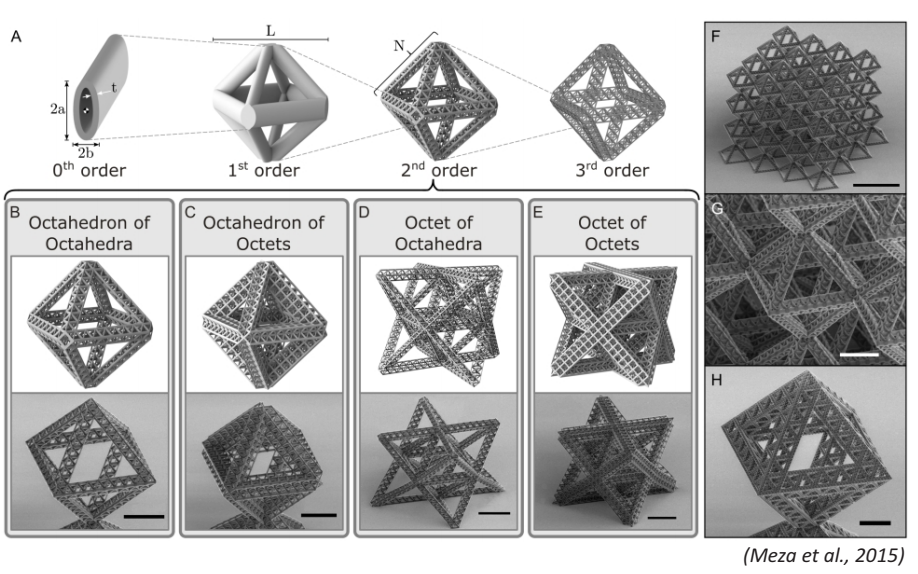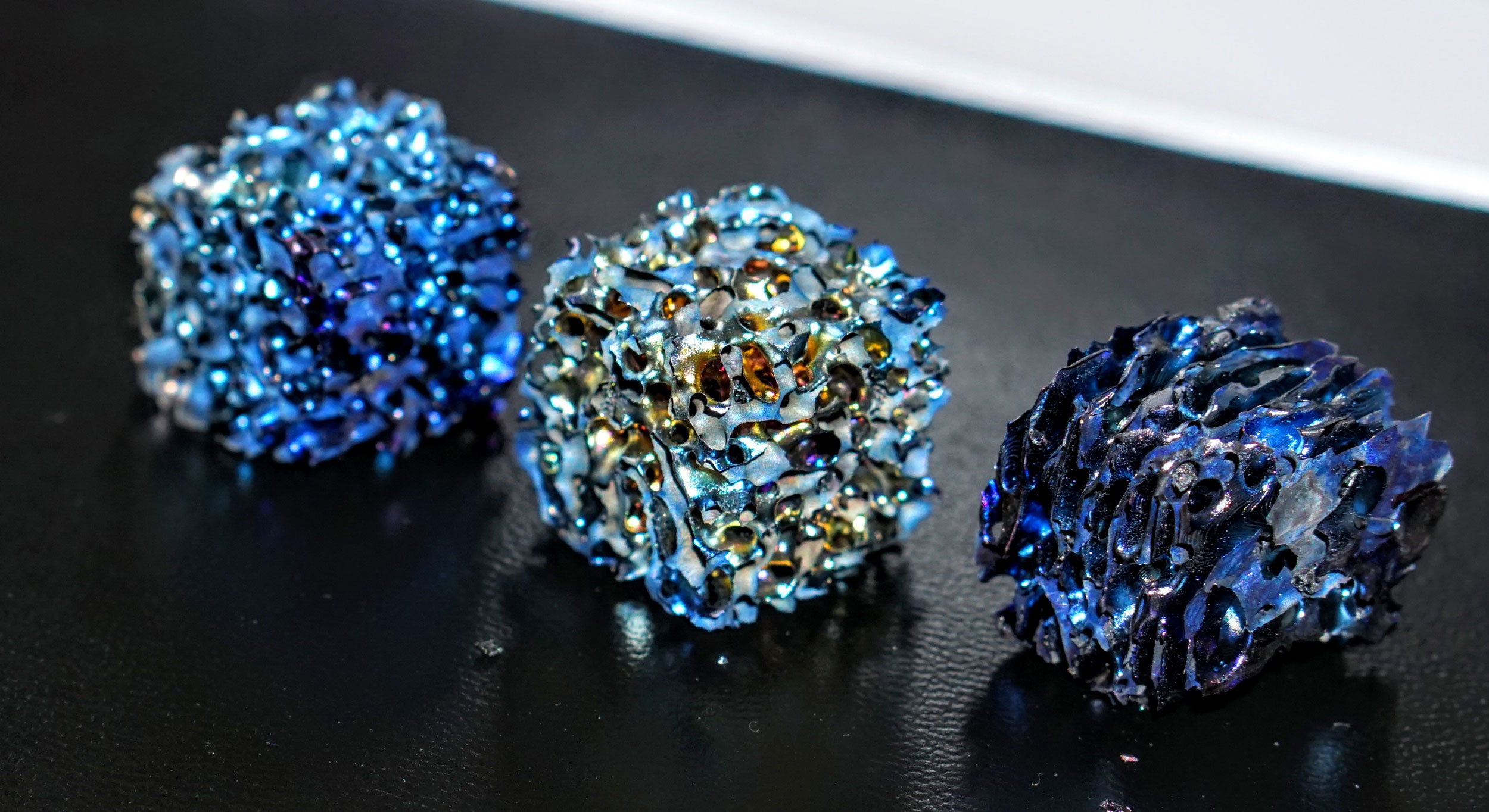3D Printing
The field of additive manufacturing (AM) is evolving with immense speed and entering more and more areas of science and industry. Current AM techniques allow for an unprecedented choice of topology, geometry and base material to realize complex hierarchical structures with features down to the nanometer scale. Besides providing fast prototyping tools for an industrial seeting, AM techniques enable us to fabricate structures across scales for studying mechanical phenomena such as size effects or instabilities, and they let us experimentally realize a wide range of architected materials (or metamaterials) and to investigate the effect of topology and architecture on their mechanical properties. We employ primarily polymer-based 3D printers for prototyping and characterizing the mechanics of architected material designs with interesting, exceptional or unusual effective properties.
Truss-based metamaterials
The fundamental concept of combining structural elements into truss networks in order to achieve high stiffness and strength while at the same time significantly reducing the weight of the overall assembly is probably as old as mankind. Examples of cellular architecture are ubiquitous in nature – e.g., in the structure of bone, shell, or bamboo – as well as in engineering designs of, e.g., bridges or transmission towers. Our research has focused, among others, on truss structures as building blocks for mechanical metamaterials (often termed truss lattices), whose properties of stiffness, strength, and wave motion are controllable by the truss architecture. Modern AM techniques enable the realization of diverse structural design principles across length scales, resulting in an ever growing field of architected materials with beneficial effective properties. A careful choice of the base material(s) along with the topology and geometry of the cellular design govern the effective material properties.
As shown below, the integration of truss design principles on several scales results in in hierarchical lattices that outperform conventional lattices in terms of stiffness- and strength-to-weight ratios. They further show near-theoretical scaling with respect to mass density. In addition, hierarchical nanolattices benefit from material-intrinsic size effects. These structures were the result of a fruitful collaboration with external page Prof. Julia R. Greer and team at Caltech.
Spinodal metamaterials and (nano)labyrinthine materials
Straying away from the classical periodic designs, we have also explored non-periodic metamaterial architectures such as spinodal structures. Phase separation in heterogeneous systems naturally produces such complex microstructural patterns, whose effective response depends on the underlying process of spinodal decomposition. We have computaitonally produced tailored labyrinthine materials with desired anisotropic mechanical properties. In our lab, we realize such structures through a process of additive manufacturing followed by metal coating at macroscopic scales. At the nanoscale, such structures reveal intriguing properties, as we demonstrated in collaboration with Prof. Julia R. Greer and team at Caltech.


